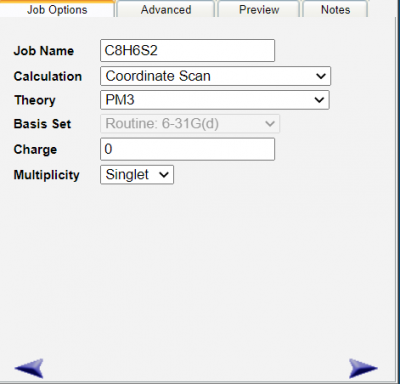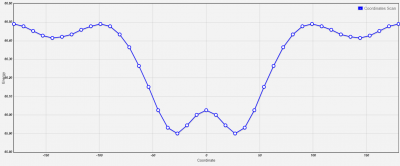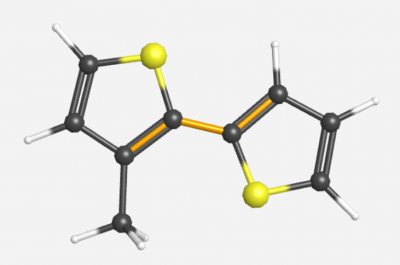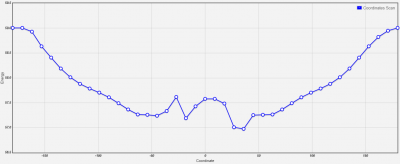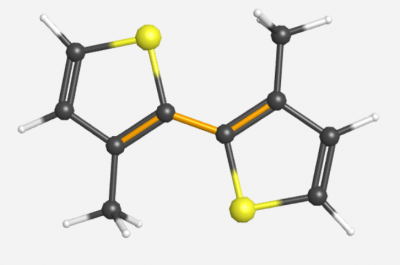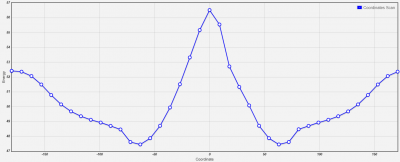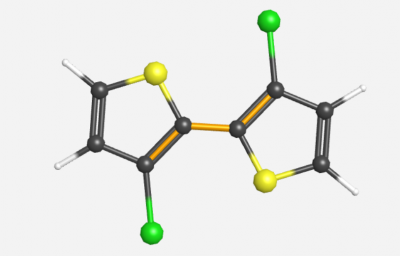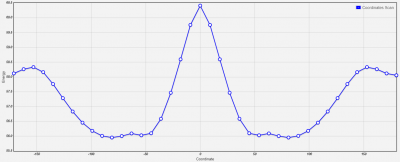Rotational Energy Barrier Analysis of the Middle C-C Bond in P3HT Like Compounds
Materials and Methods
Obviously, I started off with building my molecules in WebMO, and to analyze the energy barriers associated with rotation around the middle C-C bond, I just edited to z-matrix and only scanned the middle C-C dihedral angle (180o), using 40 configure scans in all to generate a sufficient energy barrier graph.
A semi-empirical approach with Parametric Method 3 (PM3) was utilized for each compound. I tried working these calculations with an ab initio approach using Hartree Fock (HF); however, this method was unable to generate Energies for any of the 40 coordinates that were scanned.
Below is a picture of the general format I used to configure these jobs in WebMO.
Middle Dihedral Angle with No Substituents
Symmetry: C2h
The molecule above was used for analysis. For the first molecule, the hydrocarbon substituents were removed.
This calculation took 40.6 seconds to complete.
Middle Dihedral Angle with One Methyl Substituent
Symmetry: C1
Middle Dihedral Angle with Two Methyl Substituents
Symmetry: C2h
Replacement of Methyl Substituents with Functional Groups
==Overall Rotational Energy Barrier Comparison between the Unsubstituted P3HT, PH3T with 2 Methyl Substituents, and with 2 Chlorides
